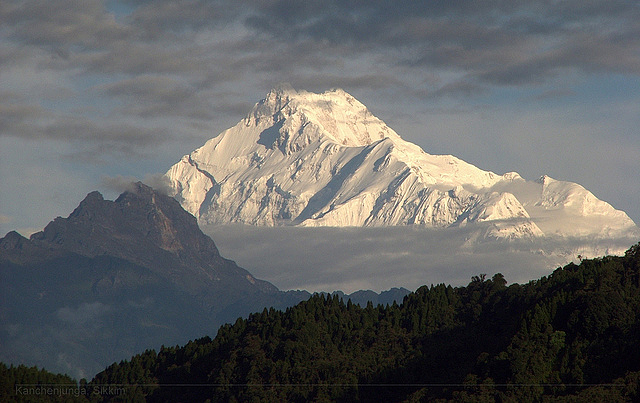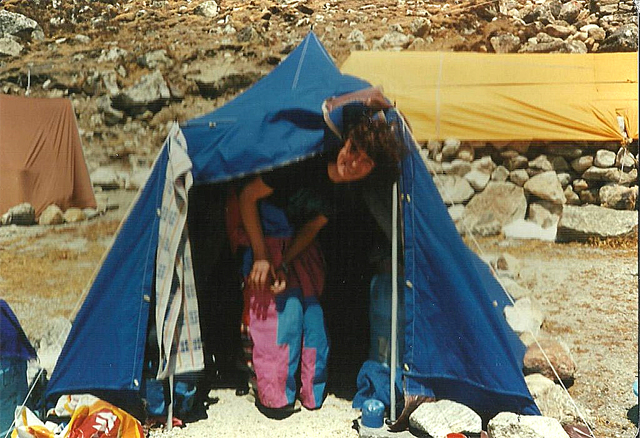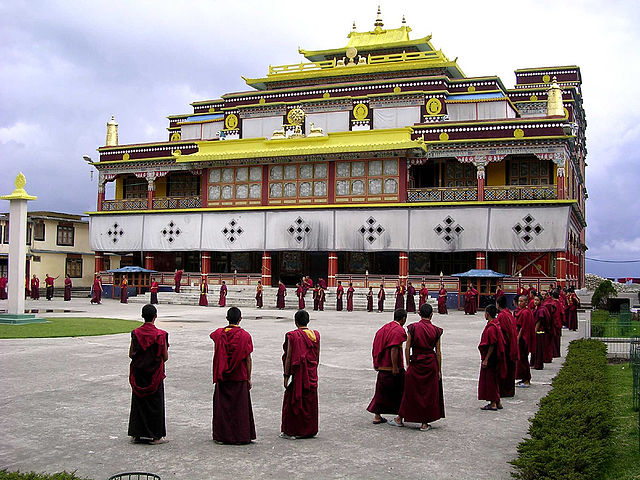Quick, what is the third highest mountain in the world? Most lovers of geography trivia questions would know the highest—Everest—and the second highest—K2—but the third? The answer is a relatively lesser-known peak in the Eastern Himalayas, Mt. Kanchenjunga, located on the border of Nepal and the Indian state of Sikkim. Even less well known, unfortunately, is the fact that it is a sacred mountain to the Lepchas and some of the other people of that state.

And the sad news is that its sacred status has just become threatened. According to a news story in The Telegraph from Calcutta on August 22, India’s Union Home Ministry has opened a bunch of mountain peaks, including Kanchenjunga, to mountaineering expeditions.
The state government of Sikkim had banned expeditions up the sacred mountain in 2001. Previous to this recent announcement, mountain-climbing expeditions were required to go through more bureaucratic hoops from the national government to secure climbing permits, but now all it will take will be clearance from the Indian Mountaineering Foundation (IMF) for permission to climb 137 popular peaks in the Himalayas. The intent of the government is to promote more adventure sports—and, presumably, tourist rupees.
Government officials and NGOs in Sikkim reacted with shocked anger to the news. The Places of Worship Act enacted by the state legislature in 1991 spelled out the sacred nature of Kanchenjunga and the fact that it was to be protected as a place for worship. Other mountain peaks in Sikkim were also designated as sacred and protected.
Tseten Tashi Bhutia, from the Sikkim Bhutia Lepcha Apex Committee, labeled the decision to open the sacred peaks widely to climbers as “a blatant mistake.” He added that his organization feels the announcement is the result of a lack of communication between the state government and the home affairs ministry. He expects the state to pressure the ministry to reverse its decision. If the decision is not reversed, “we will decide on our course of action,” he said.

The article in The Telegraph explains the point of view of the mountaineering community—that the new approach will open up permission by the IMF to mountain climbing, which is much more efficient than waiting for visas to be issued by the government. The President of the IMF said that his organization “can now directly give permission in a few days and this will promote adventure tourism.”
Another news story about this development last Thursday from EastMojo, a digital news website that concentrates on northeastern India, provided more details about the sacred character of Kanchenjunga.
The mountain was first climbed by a British mountaineering team in 1955. Joe Brown and George Band stopped just short of the summit itself because they had promised the ruling prince of Sikkim, an independent country at the time, that they would not set foot on the actual summit of the mountain. Climbing parties and individual climbers since then have followed that tradition, all ending their climbing just before reaching the summit as a way of showing respect for the religious beliefs held by the Lepchas and the Bhutias.

These people worship the mountain—it’s their guardian deity. They believe that the mountain god was actively involved in introducing Buddhism into Sikkim. The festival known as “Pang Lhabsol” is celebrated at the Ralang Monastery in Sikkim as a way of seeking the mountain god’s continued protection.
The festival is celebrated in late August or early September every year. It commemorates the eternal peace and brotherhood sworn between the Lepchas and the Bhutias in the 15th century at Kabi, in Sikkim, beliefs that are cherished by Kanchenjunga.